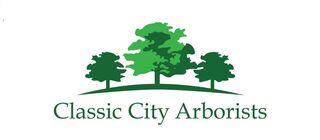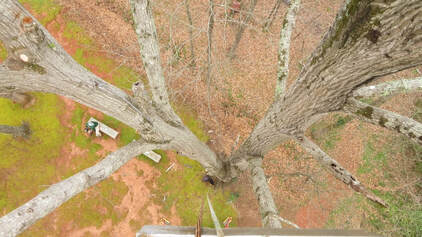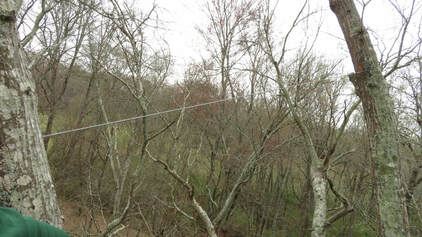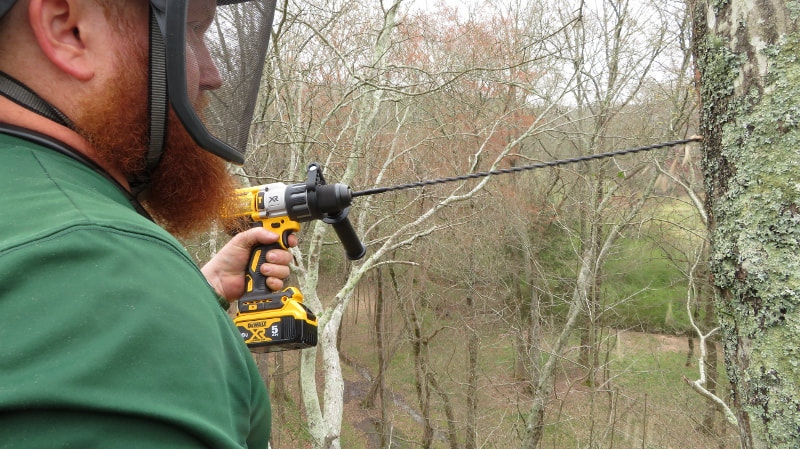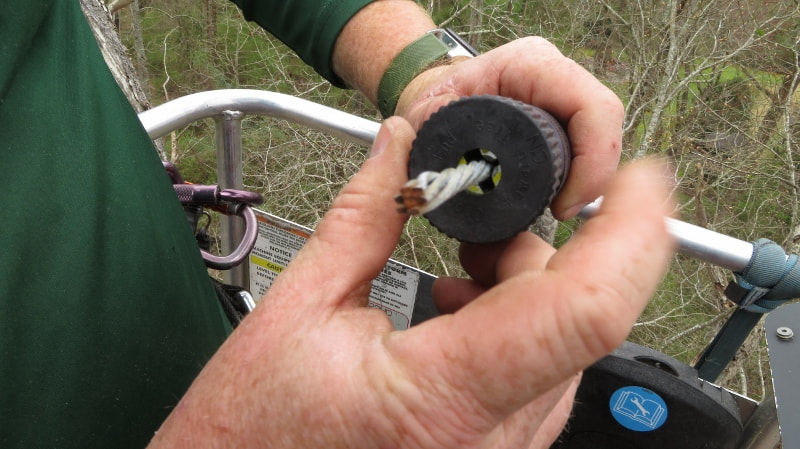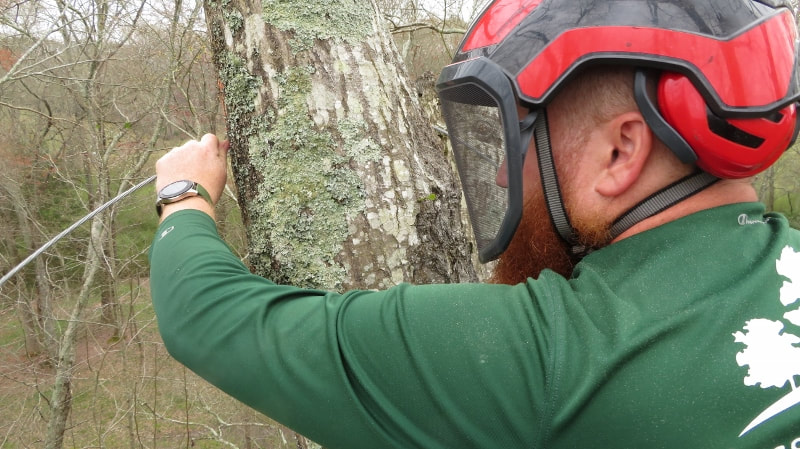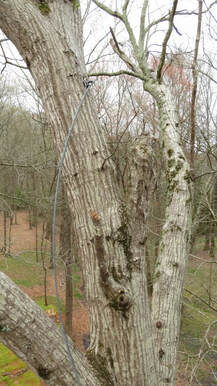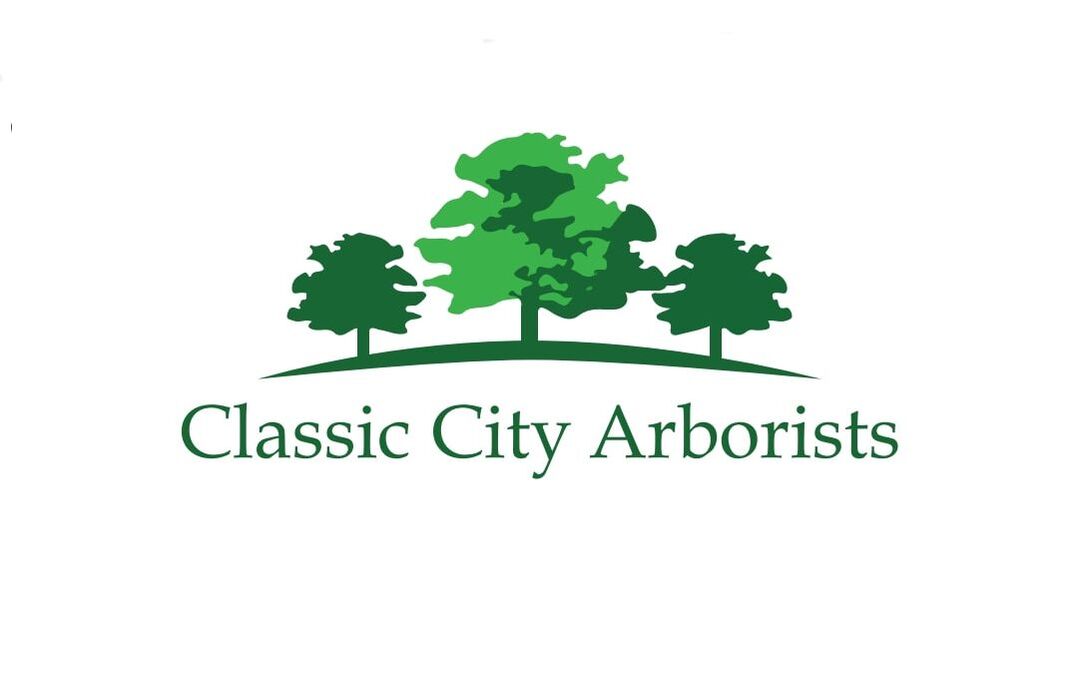|
News and Blog Articles
|
|
For this month’s Job Spotlight, we want to feature an oak tree with codominant stems that we cabled together for support as the tree continues to grow. These two stems (or "leaders") emerge from the same location on the trunk and have remained similar in size as the tree has grown, neither one dominating as the main tree trunk. Trees with codominant stems are at a much higher risk for failure. As the tree continues to grow, bark will build up at the junction where the two leaders separate from the trunk. This "included bark" is not as strong as wood which creates a weak connection point at the "V" shaped union where the leaders come together. As the tree continues to grow, the weight and leverage of the two separate canopies can pull the tree apart like a giant wishbone. So what do we do?The most drastic option would be to remove the tree entirely. This is definitely the most expensive option, and oftentimes, customers don’t want to lose their tree if they don’t have to. In the Athens area specifically, many of our oak trees have been growing since the town itself was established. If you’re lucky enough to have one of these stately, mature trees in your yard, you’ll want to keep it there if at all possible. Another option would be to prune the limbs of the tree to reduce the canopy weight, thus decreasing the overall leverage acting at the union point. While this can work in some cases, it is by no means a long-term fix, as both leaders will continue to grow and need to be pruned again in the future. The final option, and the option we went with in this month’s Job Spotlight, is cabling. What is cabling?This process typically involves the installation of a cabling system between opposing portions of the tree in the upper canopy, usually between half-way and two-thirds of the overall height of the tree. Connecting portions of the upper canopy that are on opposite sides of the main union helps improve the structural integrity of the tree as a whole by decreasing the likelihood of a weather event causing a failure. Other reasons a tree might need to be cabled are due to a small root system, poor branching habits, split limbs, or even pruning or tree maintenance that was executed improperly in the past. Any of these instances can be aggravated into failure by strong winds or heavy rain. In this case, we have a codominant tree with two leaders growing in opposite directions from each other. Cabling this tree requires connecting the two leaders together so they can support each other, rather than working against each other. The connection point is determined by a certified arborist to ensure the greatest level of support. How does it work?Cabling, as the name suggests, involves using cables, bolts, and brace rods. All the hardware used in this process is usually constructed of extra-high-strength steel to ensure that it can successfully support the tree and also stand up to the test of time and the elements. Once upon a time, this process involved drilling a hole into the tree, and then screwing large bolts into those holes for the cables to have an anchor. The number of bolts varies, but usually there’s a minimum of two: one where the tree needs support and one where that support is going to come from. The tree in this particular job had actually been cabled before, using this older method, however the tree grew around the bolt and the cable snapped, leaving the dual leaders with no support. In the last few years, the method of cabling has changed; rather than using bolts with loops at the end to install cables, we use cable end stops, which look kind of like an old-fashioned telescoping camera lens. To use them, a small hole is drilled all the way through the target area, that being the dual leaders in this case. A cable is then ran through the small holes of both leaders, and one of the two cable end stops is attached to one end of the cable. Before attaching the second cable end stop, a roping system is used to pull the opposing leaders together so that the newly installed cable will be taught (no slack) but not tight. Pulling the two leaders too tight can have adverse affects on the system and the tree. The tree is cabled -- what happens next?
How do I know if my tree needs cabling?The decision to prune, cable, or remove a tree entirely depends on a wide range of factors, and we recommend that you always consult a certified arborist before you choose. An arborist will be able to consider the tree as whole and determine which limbs are vital to the tree’s structural integrity and should therefore be saved, and which can be pruned away. They will also be able to tell you when a tree presents too much of a risk or is simply too damaged and needs to be removed all together. In addition, a certified arborist is aware of and will adhere to the range of material and practical standards established by both the American National Standards Institute as well as the International Society of Arboriculture that are designed to ensure any and all tree work is executed safely, carefully, properly, and effectively. Any tree at risk for failure presents a danger to you, your family, your home, and your property, so if you suspect one of your trees might need work, give us a call! At Classic City Arborists, we offer free estimates. Scott will come out to look at your tree and let you know what his professional opinion is, as well as how much it should cost. Your safety and the safety of our community is our main priority. Whether or not you choose to work with us, we encourage you to seek professional advice and professional tree care! AuthorEmily Casuccio is sister and sister-in-law to Rebekah and Scott Rushing, and has over half a decade of experience in copywriting, copyediting, proofreading, and developmental storyboarding. She's worked with both published and undiscovered authors on both fiction and nonfiction, and takes pride in supporting local businesses. Her passion lies in the written word and helping authors of all capacities realize their dreams and achieve their fullest potential. To learn more about her, read samples of her work, or contact her, visit her online portfolio. AuthorRebekah Rushing is a mother of two under four and the co-owner of Classic City Arborists. When she isn't dealing with snotty noses and dirty diapers, she manages customer service, accounting & finance, marketing & advertising, and human resources. If you have worked with us on a project, then you have undoubtedly spoken with her on the phone at least once! Check out our website, which she designed, or give us a call to speak with her directly.
0 Comments
Your comment will be posted after it is approved.
Leave a Reply. |
Categories
All
Archives
January 2023
|
|
23 Whatever you do, work at it with all your heart, as working for the Lord, not for human masters,
24 since you know that you will receive an inheritance from the Lord as a reward. It is the Lord Christ you are serving.
Colossians 3:23-24
24 since you know that you will receive an inheritance from the Lord as a reward. It is the Lord Christ you are serving.
Colossians 3:23-24
